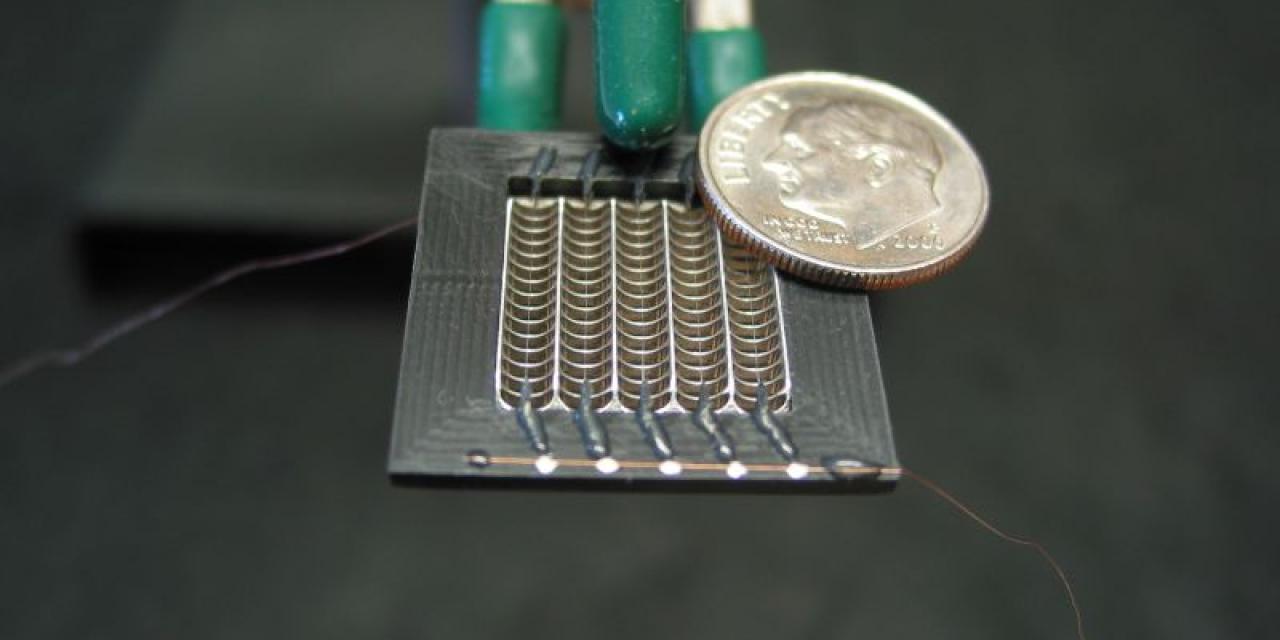
Any hardcore gamer who tried to overclock his pc knows that the greatest limitation to how far you can go is your ability to keep the system cool. Needless to say, the size of cooling systems and fans is a major limitation for laptops and handhelds' processing powers.
Dan Schlitz and Vishal Singhal of Thorrn Micro Technologies, Inc. are working on a new solid state cooling system that is 35 times more efficient than existing fans.
"The RSD5 is one of the most significant advancements in electronics cooling since heat pipes. It could change the cooling paradigm for mobile electronics," said Singhal.
The RSD5 utilizes a phenomenon called corona wind. Corona wind is produced by passing current through a series of live wires that generate a micro-scale plasma (an ion-rich gas that has free electrons that conduct electricity). The wires lie within un-charged conducting plates that are contoured into half-cylindrical shape to partially envelop the wires.
Within the intense electric field that results, ions push neutral air molecules from the wire to the plate, generating the corona wind.
"The technology is a breakthrough in the design and development of semiconductors as it brings an elegant and cost effective solution to the heating problems that have plagued the industry," said Juan Figueroa, the NSF SBIR program officer who oversaw the research.
The researchers were able to control the micro-scale discharge to produce maximum airflow without risk of sparks or electrical arcing. As a result, the new device yields a breeze as swift as 2.4 meters per second, as compared to airflows of 0.7 to 1.7 meters per second from larger, mechanical fans.
"The technology has the power to cool a 25-watt chip with a device smaller than 1 cubic-cm and can someday be integrated into silicon to make self-cooling chips," said Schlitz.
This device is also more dust-tolerant than predecessors. While dust attraction is ideal for living-room-scale fans that provide both air flow and filtration, debris can be a devastating obstacle when the goal is to cool an electrical component.
